How do you compel your target audience to choose your solutions in a sea of available options?
With dozens, if not hundreds, of brands vying for consumer attention, standing out in 2025 can be exceptionally challenging.
But positioning your product as the best option for your target audience isn't an impossible feat. In fact, your website can play a tremendous role in successful differentiation.
If you wish to optimize your online presence in a way that will showcase your offer's strengths and superiority, here's a list of the most effective ways to differentiate your product with website visuals and copy.
Article Shortcuts:
- Use Consumer Insights to Identify Potential Differentiators
- Get Straight to the Point
- Provide Immediate Value, Regardless of Purchase Intent
- Enable User-Friendly Product Evaluation
- Invest in Emotional Visuals and Copy
- Produce Above-Average Social Proof
- Frequently Asked Questions

Source: Depositphotos
1. Use Consumer Insights to Identify Potential Differentiators
The only effective way to position your solutions as the ideal choice for your audience is to understand what your prospects want in the first place.
If you look at some of the more recent consumer research studies, you'll see that today's buyers want relevant and personalized brand experiences.
- According to a study conducted by Salesforce, 73% of consumers expect companies to show an understanding of their unique needs and expectations.
- McKinsey found that 76% of people become frustrated when brands don't provide personalized interactions. And;
- Adobe discovered that 56% of consumers feel more loyal to brands with an in-depth customer understanding.
With this in mind, it's crucial that you align your online presence with your prospects' wants and unique needs, but that's not all. It's equally important to use web visuals and copy that clearly reflect your target audience's experiences and expectations.
For inspiration, check out how OrthoBracing does it on its homepage. Knowing that a large segment of its target audience consists of elderly users, this brand actively chooses web visuals that showcase senior models.
On the one hand, this maximizes the chances of web visitors recognizing OrthoBracing's products and value propositions as relevant to their needs.
On the other hand, it demonstrates that the brand's solutions are made for a highly specific user type, allowing them to stand out in an industry that's otherwise focused on athletes.
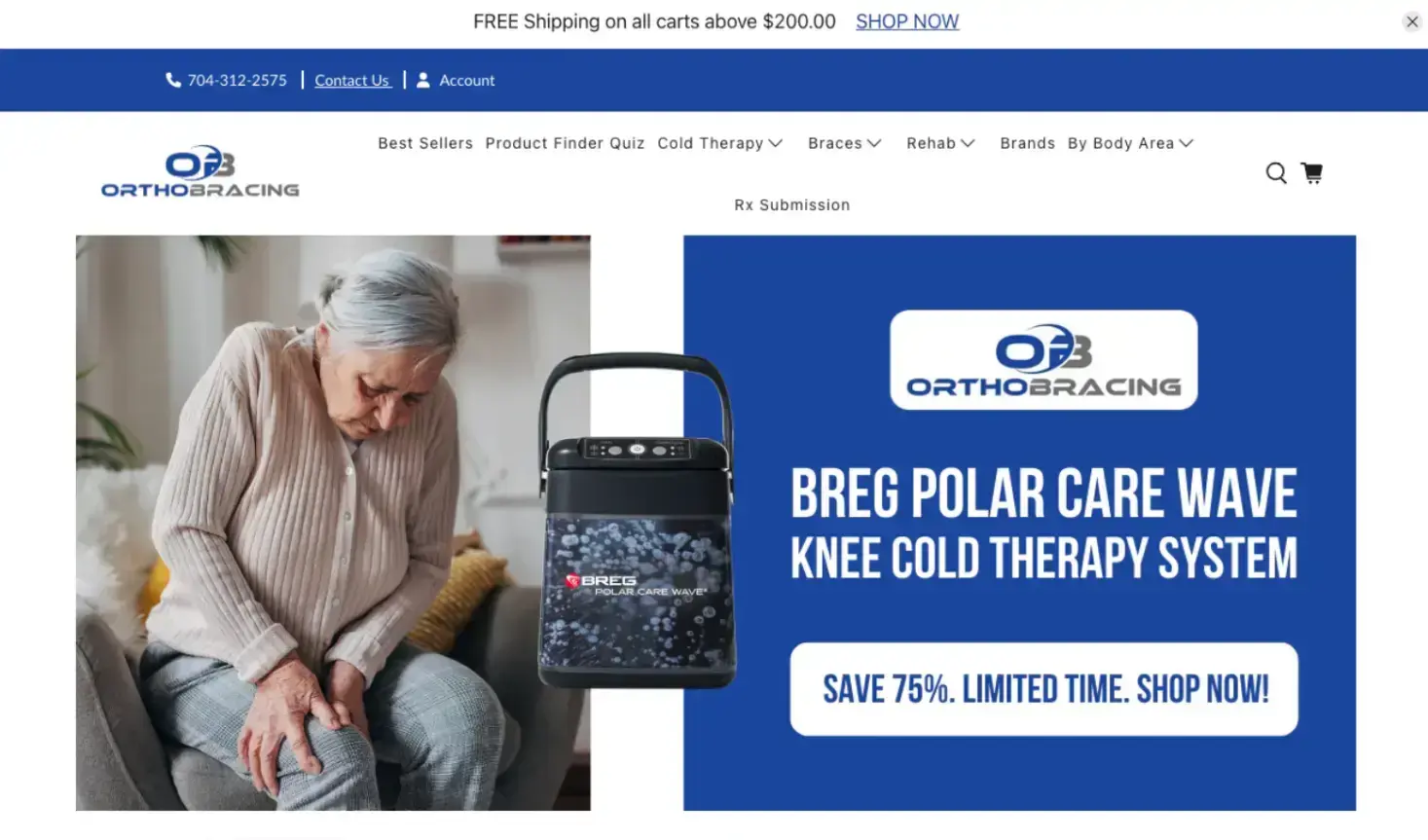
Source: OrthoBracing
2. Get Straight to the Point
Web users form brand impressions within 50 milliseconds of landing on a website.
What does this mean? Well, it shows that you have less than the blink of an eye to capture your target audience's attention with a promise of value.
Do it well, and you're sure to position your business as a competent entity consumers can rely on to solve their pain points. However, missing the mark can guarantee that web visitors will seek out one of your direct competitors.
Now, the best method for capturing and retaining web user attention is with visuals. After all, the human brain is wired in a way that prefers (and prioritizes) visual info.
Nevertheless, well-written copy can be just as effective at engaging your ideal customers and convincing them that your brand offers the best solution for their needs — especially if you get straight to the point.
So, to differentiate your products, start by producing value propositions that directly address consumer pain points and aspirations. Then, use web design tactics (like negative space, color, and contrast) to make these instances of copy pop.
That way, it'll have what it takes to immediately attract your future customers' attention and convince them of your solution's effectiveness and superiority.
For inspiration on how to do this, check out the Hostinger Horizons page. This brand invites prospects to "turn [their] idea into reality." Then, it explains how its AI solution allows users to build and launch full-stack web apps in minutes.
The reason this approach works is that the copy clearly resonates with the brand's audience's wants, reflecting their ideal outcomes and presenting the brand's complex product in an approachable way.
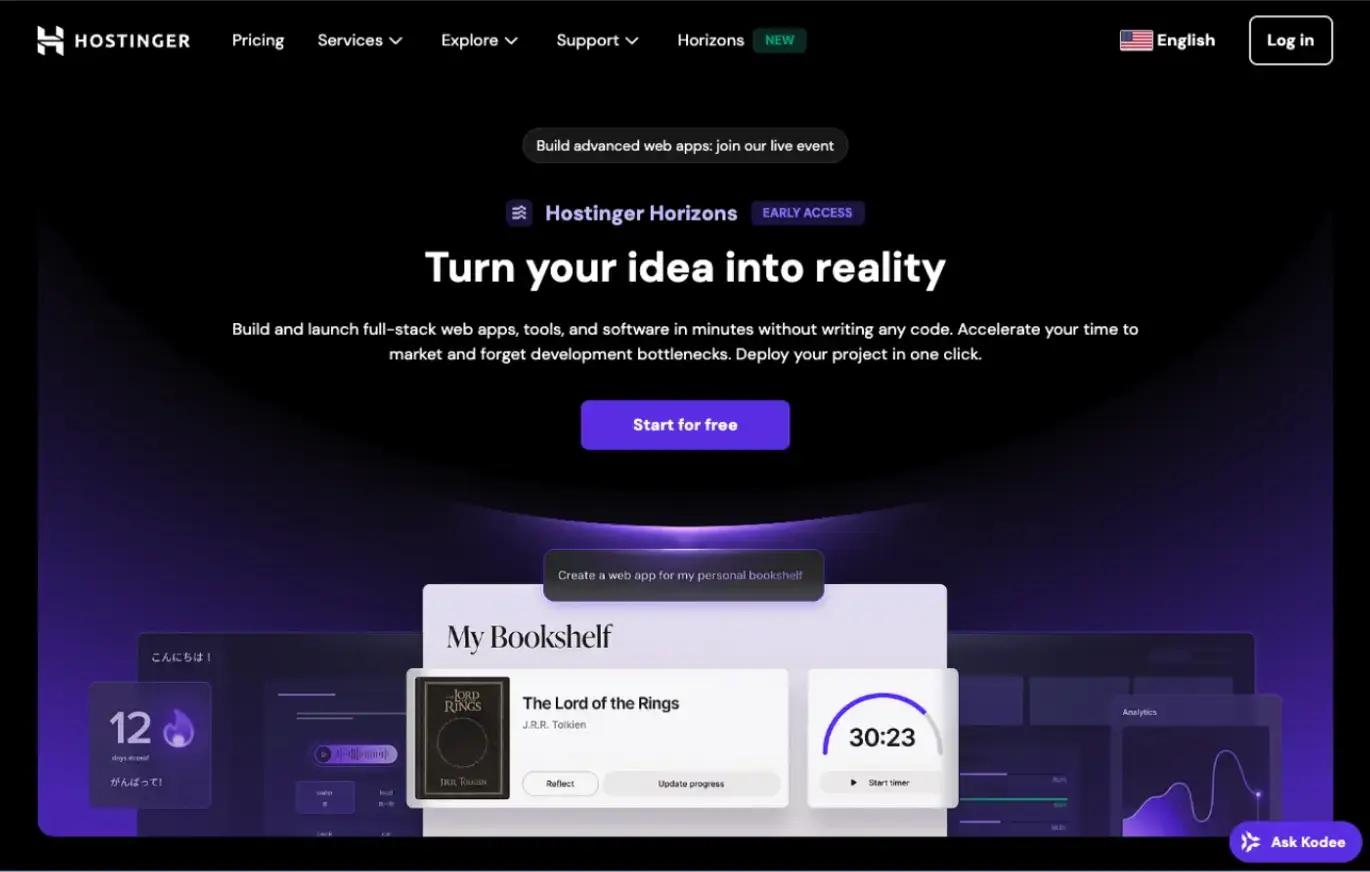
Source: Hostinger
Of course, there are other methods to accomplish the same goal. For example, if you check out Prequel, you'll see that the brand employs a super simple USP — "Skin health first."
On the surface, this may seem vague. But in truth, the claim perfectly sums up the brand's target audience's priorities, allowing Prequel to position its solutions as the best available option in an industry saturated with ineffective options.
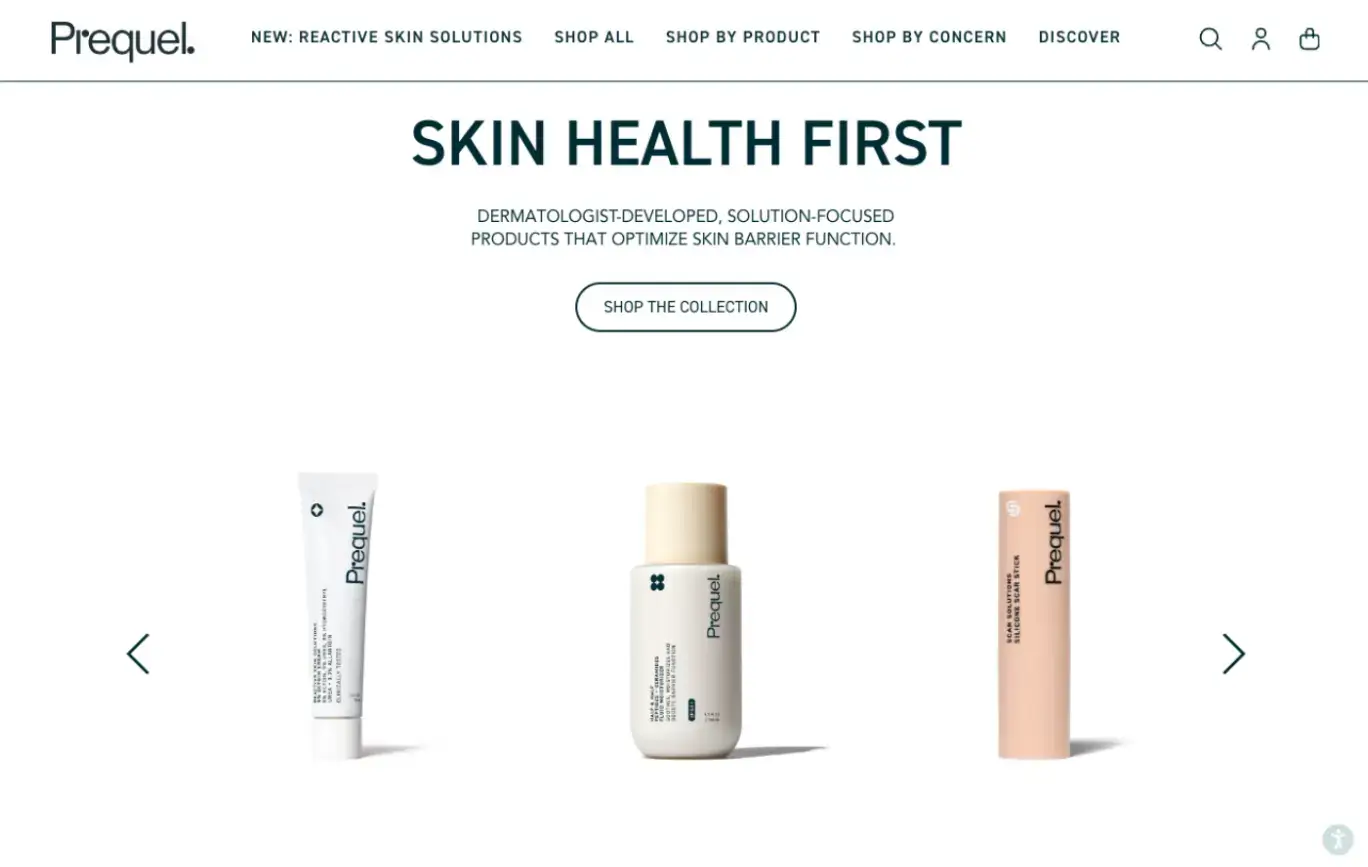
Source: Prequel
3. Provide Immediate Value, Regardless of Purchase Intent
Capturing and retaining your target audience's attention isn't the only reason to avoid time-wasters in your web design.
If you look at Internet user behavior and why people go online in the first place, you'll discover that finding educational value tops most charts.
So, if you want to position your product as the best possible choice, consider investing in copy and visuals that will provide your prospects with immediate value.
The easiest way to do this is, naturally, to invest in unique, high-quality content that solves (or at least begins to) your prospects' primary pain points.
Blog posts do a marvelous job at this. But don't discount interactive resources either — particularly if you operate in a niche industry.
For example, RE Cost Seg understands that its target audience's priorities include real estate tax savings. So, to help them learn how to reduce taxes and increase cash flow, the brand created a Cost Segregation Calculator.
What stands out about this brand's approach is that it combines interactive content with copy and visuals to explain cost segregation. This strategy provides web visitors with exceptional value. Plus, it makes them much more likely to comprehend the solution's value (and therefore convert into customers).
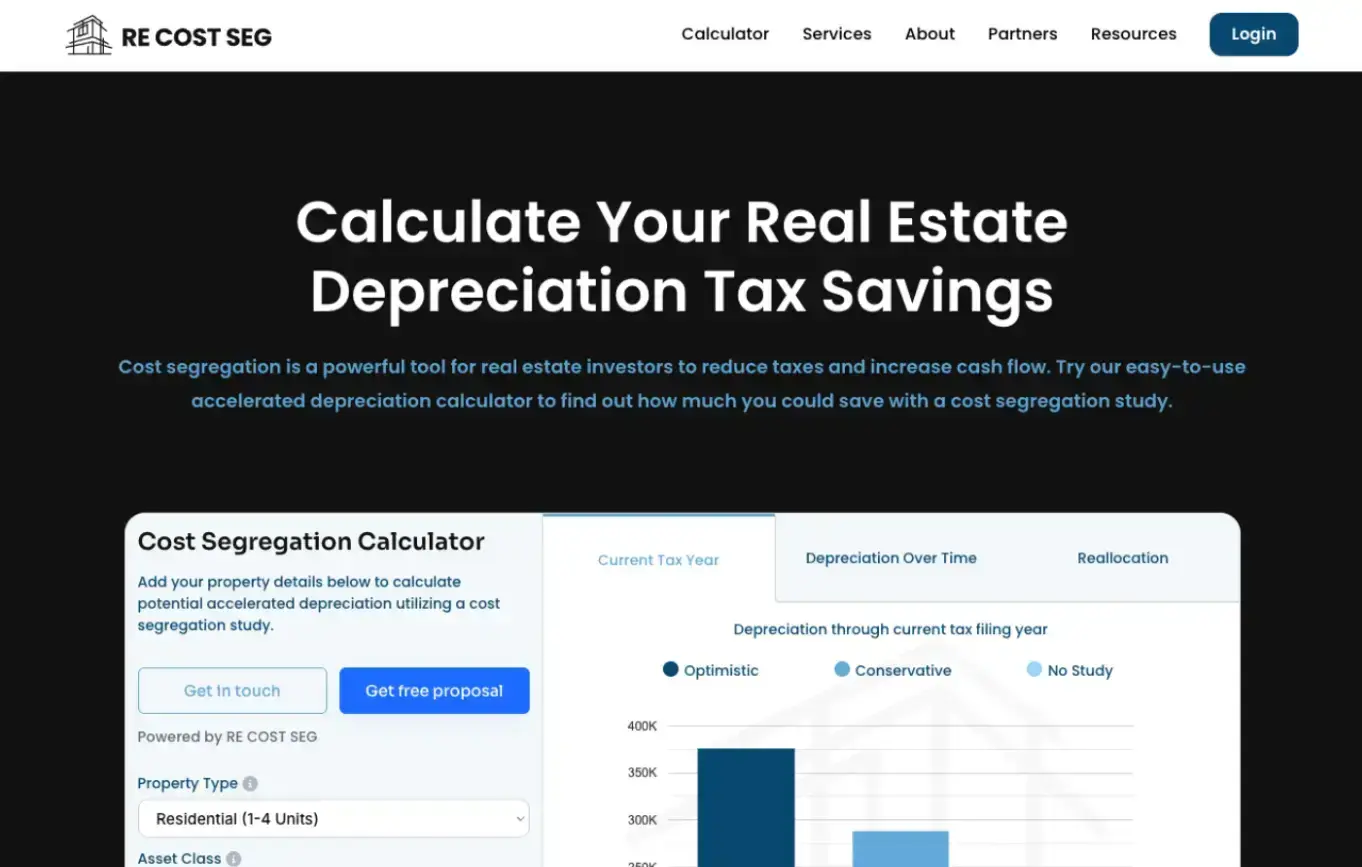
Source: Re Cost Seg
4. Enable User-Friendly Product Evaluation
The customer journey is complex and lengthy. Today's consumers find it really important to spend their hard-earned money on solutions that provide the best possible value.
So, if you want to use differentiation tactics to position your solution as the best fit for a specific audience segment, invest in visuals and copy that will aid and elevate the product evaluation process.
Essentially, the goal is to present your web visitors with high-quality, trustworthy information they can use to check (and confirm) whether your products genuinely fit their needs.
For instance, product comparison tables that include copy and product images — like the one used by Keurig — are an excellent way to educate potential customers on the nuanced differences between products and gently guide them toward making a purchase that aligns with their needs.
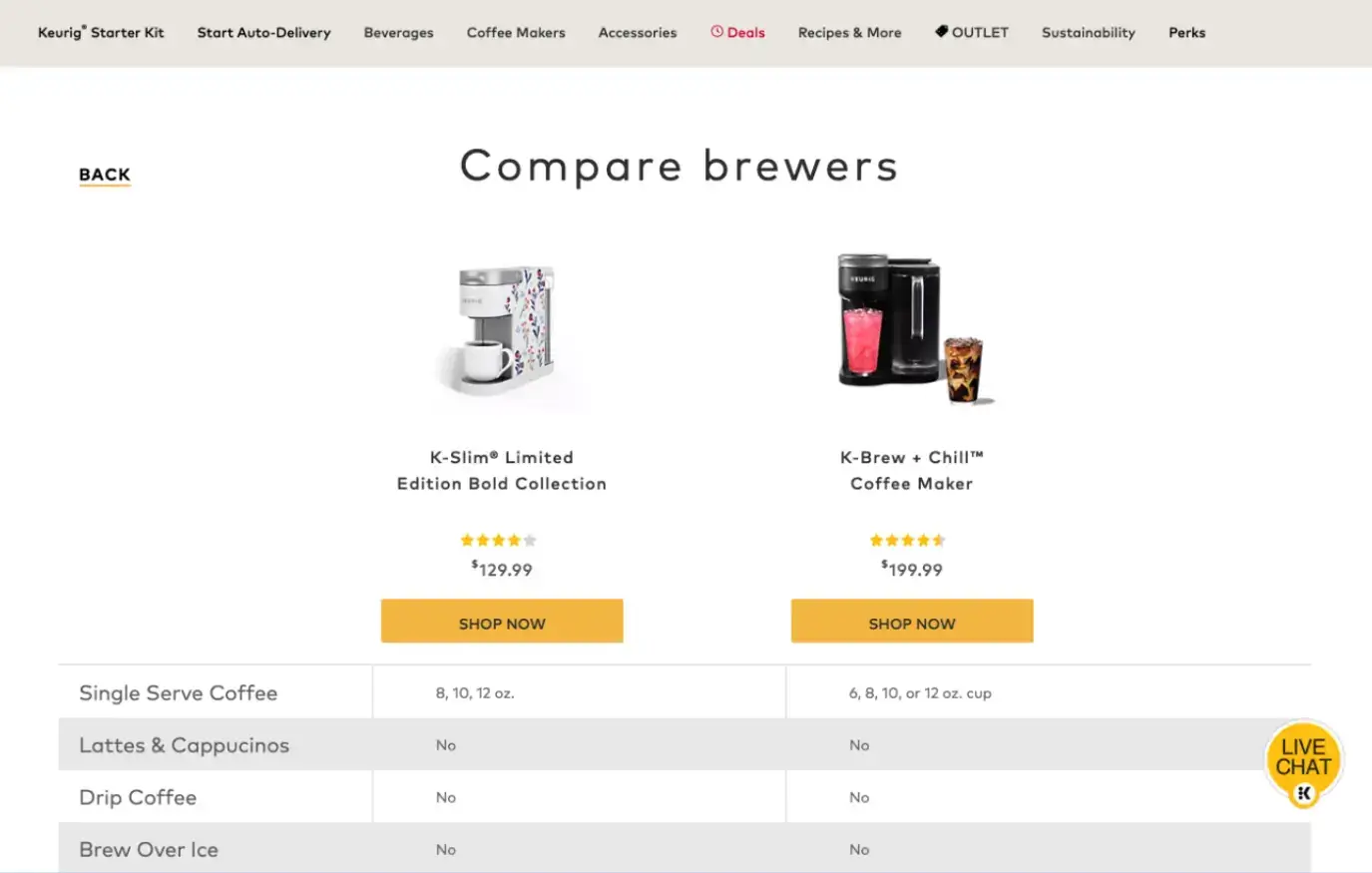
Source: Keurig
Alternatively, you could also produce product explainer videos that provide potential buyers with a more in-depth overview of what a solution can do for them.
Finally, if you want to differentiate your product and establish your brand as the best choice in your industry, don't hesitate to stack your offer against your competitors.
Deel's report on how its SaaS product compares to rival solutions is an excellent example of how you can use relevant visuals, copy, and data to emphasize the superiority of your products and get consumers to choose you over your competitors.
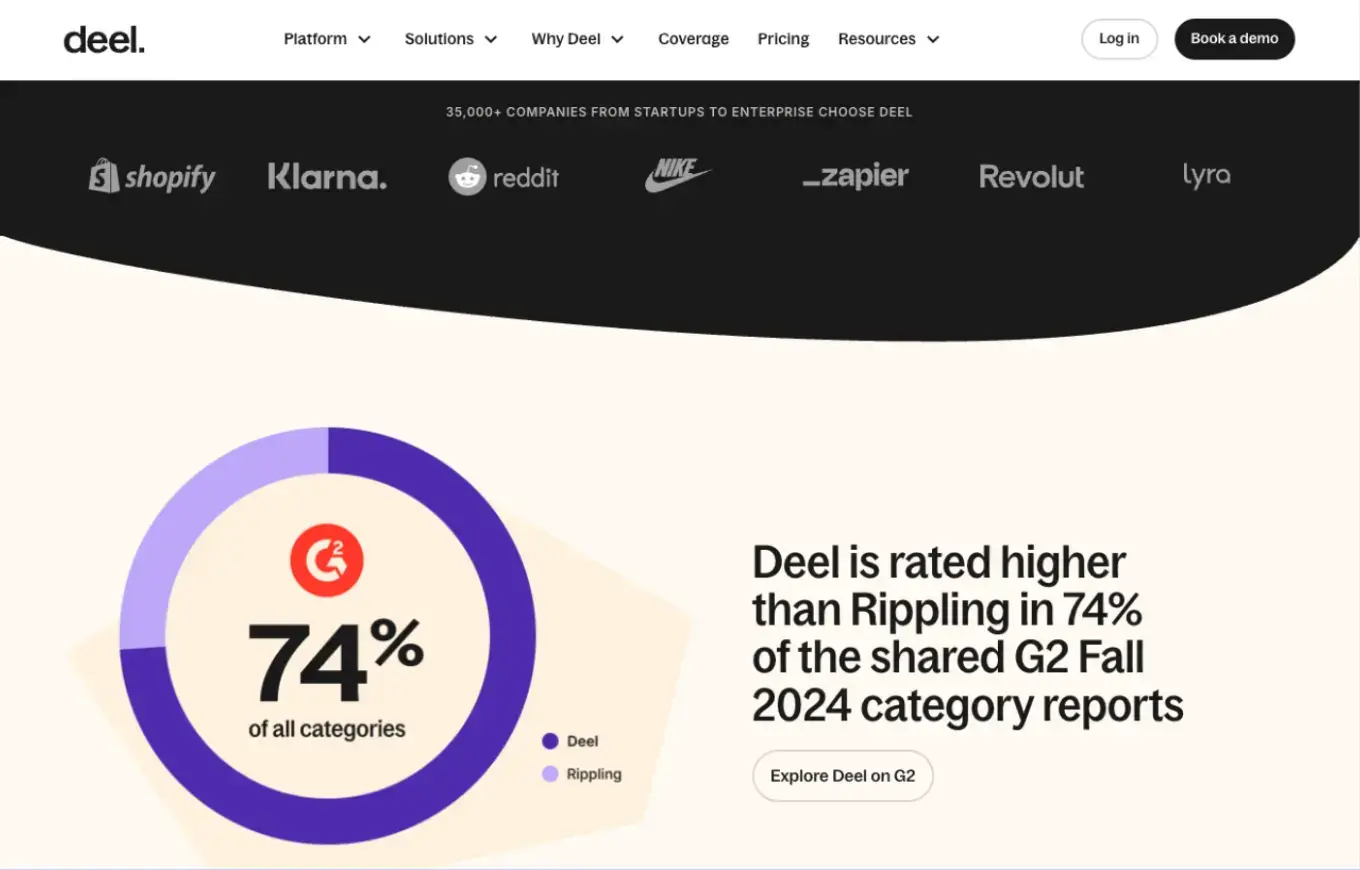
Source: Deel
5. Invest in Emotional Visuals and Copy
Despite spending a good chunk of their buying journeys populating the evaluation stage of the sales cycle, people still make buying decisions based on their feelings.
In fact, research suggests that as many as 95% of purchase decisions are subconscious. But there's a simple solution — emotional marketing.
Using your website to appeal to your audience's sentiments can make web visitors more likely to remember and appreciate your brand and products.
Furthermore, you can use emotionally charged visual or textual content to influence consumer behavior directly and nudge your prospects closer to a conversion.
One of the most popular examples of emotional marketing in web design is FOMO (the fear of missing out). As a popular conversion-boosting strategy, the idea of evoking urgency among shoppers.
FOMO (the fear of missing out), scarcity, or any other type of urgency-inducing content are all popular examples of emotional marketing. And they work great.
Nevertheless, if you're looking for differentiation tactics that boost purchase intent through the mediating effect of emotions without the involved risk of consumer alienation, it might be a better idea to appeal to your target audience's beliefs.
Research shows that 82% of people want to support organizations whose values align with their own.
With this in mind, it's no surprise that brands like CodaPet employ visuals and copy that reflect their target audience's deepest beliefs (in this case, that "pets are family").
By using emotionally charged web elements, these businesses forge strong brand-customer connections. Moreover, they position their products and services as the most logical, ethical, and effective way for ideal customers to resolve their pain points, which automatically helps them stand out from any potential alternatives.
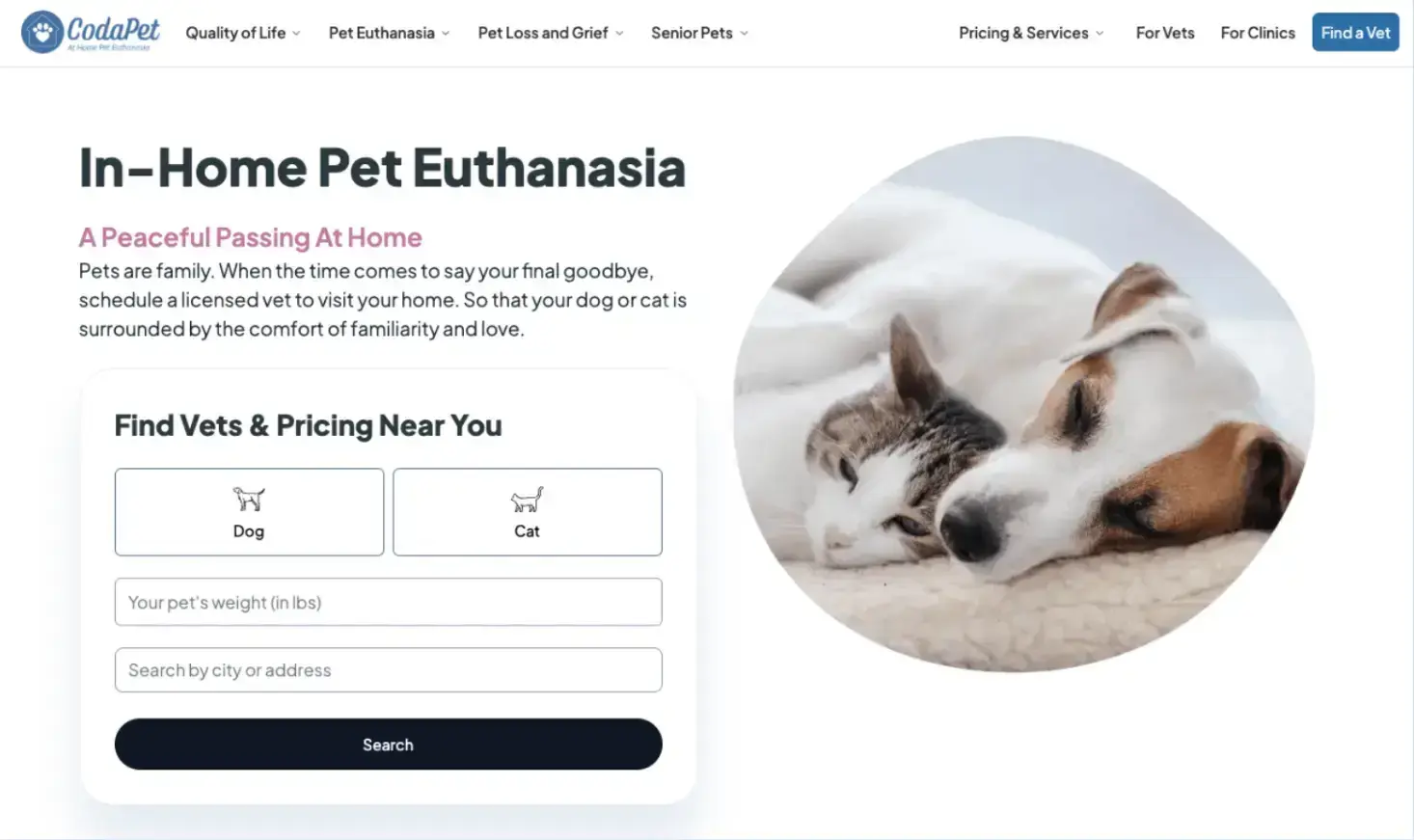
Source: CodaPet
6. Produce Above-Average Social Proof
Finally, if you want to differentiate your products in 2025 and beyond, don't forget to support your claims with social proof.
Ultimately, almost all consumers check reviews and ratings before a purchase.
However, while these simple instances of social proof can effectively differentiate your product, consider that your competitors will also be using them to convert leads.
So, how can you use social proof to set your business and solutions apart?
Well, one of the best ways to do it is to invest in in-depth social proof content that is chock-full of detail. Think customer stories and case studies similar to the ones on the RapidDirect website.
These resources offer an excellent opportunity to differentiate your product, and not just because they can testify to the competence and expertise of the people behind your company.
They're also a marvelous way to highlight any unique CX benefits your company offers.
They can help establish unexpected use cases for your solutions. And they're a great way to help potential prospects comprehend the value that they will receive if they opt to purchase from your business.
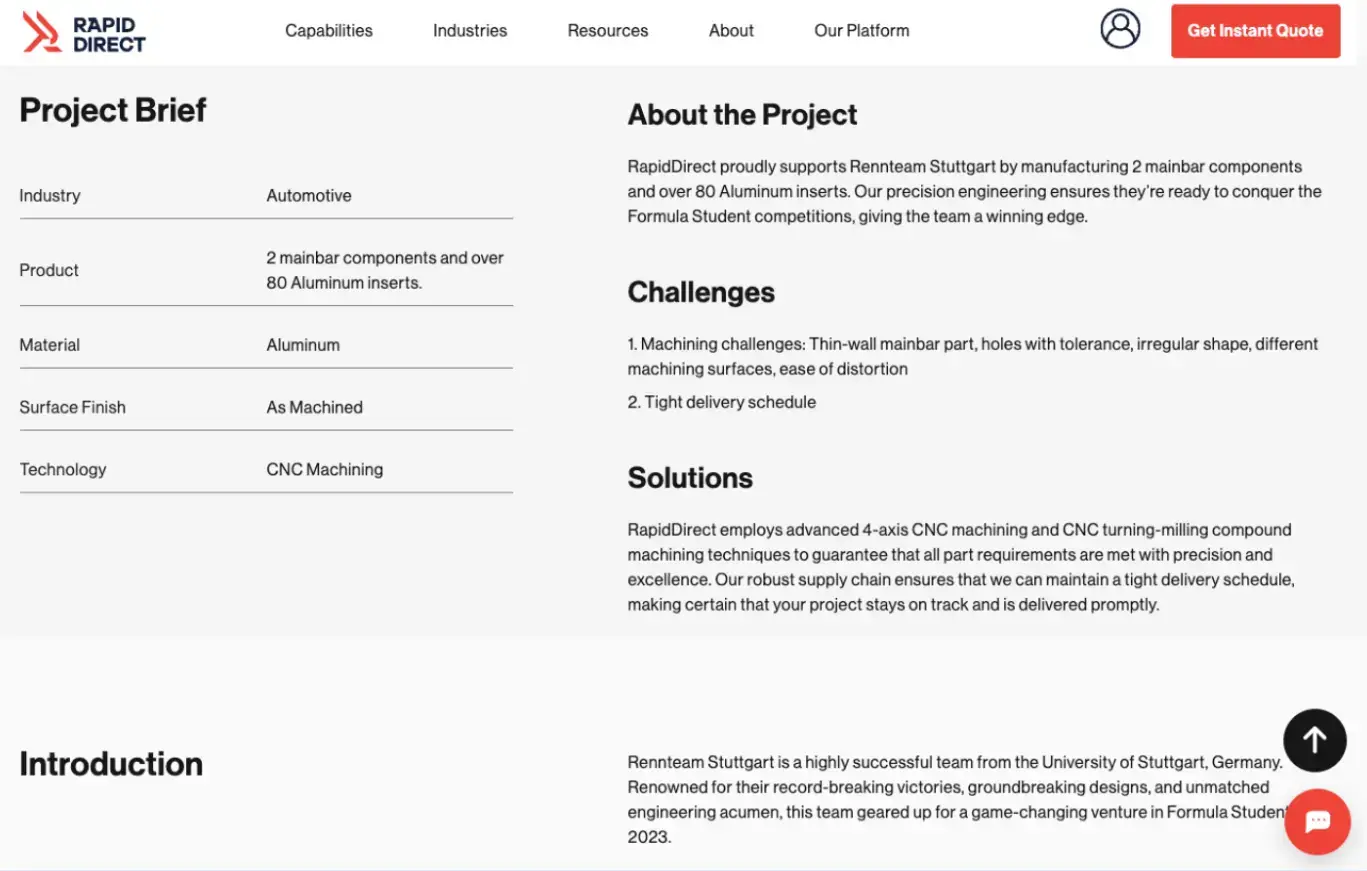
Source: Rapid Direct
Frequently Asked Questions
1. How does differentiation affect success potential?
Today's consumers have almost endless choices of available solutions. So, if you want to maximize your chances of converting customers, it's essential to make your offer stand out.
The right differentiation tactics can help consumers understand the unique value and benefits of your solutions. They can also aid in outperforming your direct competitors — especially if you can use copy or visuals to emphasize unique selling points.
2. What's the best way to stand out in competitive markets?
While there's no universal answer to this question, the best way to maximize your chances of success is to identify your ideal customers' unique wants and needs.
Then, use differentiation tactics to show how your product aligns with those needs.
3. How do I identify the unique value potential customers want from my brand?
The best way to supercharge your product differentiation strategy is to begin with in-depth audience research. It's also a good idea to keep up with the latest consumer behavior research.
Plus, don't be afraid to analyze your competitors (including the customer feedback they're getting).
This can give you valuable insights into what your target audience expects and can provide you with ideas on what to address with your differentiation-oriented visuals and copy.
4. Aren't competitor comparisons harmful?
It may seem that mentioning your competitors' products will send your leads to those competitors. However, that won't happen if you do your job right.
When producing content to compare your products with their alternatives, always highlight the unique and extra value you bring to the table, whether that includes a better price, a higher-quality product, or a more customer-oriented post-purchase service.
Final Thoughts
There you have it: some of the best ways to differentiate your product with website visuals and copy.
Whether you implement one or all of these tactics is entirely up to you. But you can rest assured that incorporating these elements on your website will have a positive effect on your brand's (and products') reputation as well as your conversion rates.
Author Bio
Natasha Lane is a content marketer and one hell of a geek. For more than a decade, she's worked with individual clients and companies of all sizes. Natasha specializes in crafting compelling content about design, branding, digital marketing, and business growth. She's happily addicted to art in all its forms and grilled tofu.



